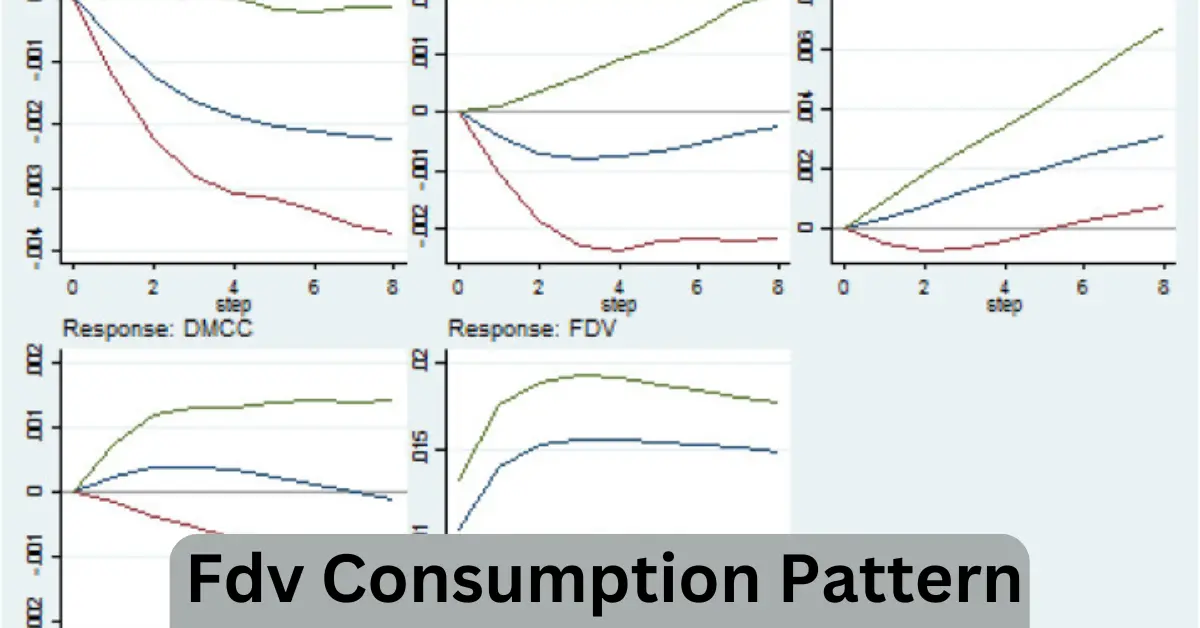Introduction
In today’s fast-paced world, what we eat and drink plays a huge role in our daily lives. Whether we’re grabbing a quick snack on the go or planning a big family dinner, our choices reflect our tastes, habits, and even our values. This is where the concept of FDV, or Food and Drink Value, consumption patterns comes into play. Simply put, FDV consumption patterns are all about understanding how people make decisions about their food and beverages.
By looking at these patterns, we can learn why some foods become popular, how often we choose to eat out, and even what influences our shopping habits. This knowledge is valuable not just for businesses aiming to meet consumer needs, but also for individuals looking to make healthier choices. In this article, we’ll explore what FDV consumption patterns are, why they matter, and the different factors that shape our eating and drinking habits. Let’s dive in!
What is FDV Consumption Pattern?
FDV consumption patterns refer to the trends and habits that people follow when it comes to their food and drink choices. These patterns help us understand how, what, and why consumers decide to purchase and consume specific products. Let’s break it down into key components:
Types of Food and Drink: This aspect looks at the different categories of food and beverages people prefer. For example, some may lean towards healthier options like fruits and vegetables, while others might prefer snacks and sugary drinks.
Frequency of Consumption: This indicates how often people buy or consume certain items. Are they eating out several times a week, or do they prefer cooking at home? This frequency can reveal a lot about lifestyle choices and priorities.
Portion Sizes: The amount of food and drink people consume can also tell us about their habits. For instance, larger portion sizes can indicate a trend toward indulgence, while smaller portions might reflect a focus on health or dieting.
Purchasing Channels: This refers to where consumers typically buy their food and drinks. Do they shop at grocery stores, order online, or grab items from convenience stores? Understanding these channels helps businesses identify where to focus their marketing efforts.
Why is Understanding FDV Consumption Patterns Important?
Understanding FDV consumption patterns is crucial for various stakeholders, including businesses, health professionals, and consumers. Here are some key reasons why:
1. Market Insights
Tailored Products: Businesses can develop and refine their products to better meet consumer needs and preferences.
Informed Marketing Strategies: Companies can create targeted marketing campaigns based on the consumption trends identified through FDV patterns.
2. Health Implications
Promoting Healthy Choices: Public health officials can use insights from consumption patterns to encourage healthier eating habits and address nutrition-related issues.
Identifying Health Trends: By tracking changes in consumption patterns, researchers can spot emerging health concerns or dietary trends, allowing for timely interventions.
3. Sustainability Efforts
Reducing Food Waste: Understanding what consumers prefer can help businesses minimize waste by aligning their production with actual demand.
Eco-Friendly Practices: Companies can adopt sustainable practices that resonate with environmentally conscious consumers, such as offering organic options or reducing packaging waste.
4. Economic Impacts
Consumer Spending: Insights into FDV consumption patterns can highlight how much money consumers are willing to spend on food and beverages, influencing pricing strategies.
Investment Opportunities: Understanding market dynamics can lead to better investment decisions, especially in emerging markets that are aligning with consumer trends. For instance, platforms like Crypto30x.co may utilize such insights to guide investments in the food and beverage sector.
5. Cultural Awareness
Celebrating Diversity: By recognizing diverse eating habits and preferences, businesses can create inclusive products that cater to different cultural backgrounds and dietary restrictions.
Step-by-Step Guide to Understanding FDV Consumption Patterns
Step 1: Identify the Target Audience
Define Your Consumer Base: Determine who you want to analyze. This could be based on demographics like age, income, location, or lifestyle choices.
Conduct Surveys: Use surveys and questionnaires to gather data on consumers’ food and drink preferences, frequency of purchases, and where they shop.
Step 2: Gather Data
Market Research: Utilize market research reports that highlight current trends in food and beverage consumption.
Sales Data Analysis: Review sales data from retailers or online platforms to understand what products are performing well.
Step 3: Analyze Consumption Patterns
Categorize Products: Group the data into categories such as snacks, beverages, organic foods, etc. This helps in identifying preferences within each category.
Frequency and Portion Size: Analyze how often consumers purchase certain items and the typical portion sizes. This information can indicate lifestyle choices and dietary habits.
Step 4: Identify Influencing Factors
Cultural Influences: Consider how cultural background and traditions affect food choices and consumption patterns.
Health Trends: Stay updated on health trends that may influence consumer behavior, such as a rise in plant-based diets or low-sugar options.
Step 5: Utilize Technology
Digital Tools: Use data analytics software or platforms like Crypto30x.co to track consumer trends and preferences effectively.
Social Media Insights: Monitor social media platforms for discussions around food and beverage trends to gauge consumer sentiment.
Conclusion
Understanding FDV consumption patterns is essential for anyone involved in the food and beverage industry, from businesses to health professionals. By analyzing these patterns, we can gain valuable insights into what consumers want, how often they buy certain products, and the factors that influence their choices. This knowledge not only helps businesses tailor their offerings but also promotes healthier eating habits and sustainable practices. As consumer preferences continue to evolve, staying informed about FDV consumption patterns will be key to meeting the needs of today’s market. So, whether you’re a business owner or a health advocate, embracing this understanding can lead to better decisions and positive changes for everyone involved!

